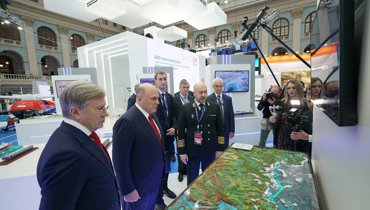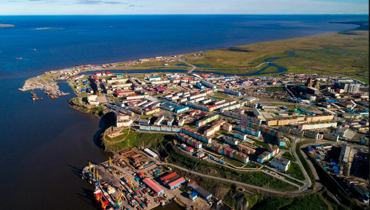
Polar Express
A project for the construction of a transarctic submarine fiber-optic communication line from Murmansk to Vladivostok
The unique project of a transarctic submarine fiber-optic communication line (FOCL). The new system includes 6 pairs of optical fibers with a capacity of 52–104 Tbt/sec and total length of 12,650 km. The project will connect Murmansk to Vladivostok along the shortest route from Europe to Asia and create an alternative to satellite communication systems in northern latitudes, minimizing the level of delay in transmission of information. The project will help to meet the growing needs of online commerce, cloud technologies and big data by providing reliable, affordable connectivity and Internet access.
objectives

Polar Express will enable the development of the port infrastructure along the North Sea Route and the creation digital infrastructure in the Arctic region.
The project is being rolled out in accordance with the President’s decree on the “Development strategy of the Arctic Zone of the Russian Federation and ensuring national security until the year 2035”.
participants



of the project

The marine section of the ARCTIC FOCL is implemented using a specialized submarine cable. The cable has six pairs of optical fibers (OF) and a conductive element for powering underwater optical amplifiers.
- two pairs of OF for direct communication on the main section of the FOCL “Murmansk-Vladivostok” with a length of 12650 km;
- two pairs of OF for the organization of four independent branches to intermediate objects at the landing points: Amderma, Dixon, Tiksi, Pevek, Anadyr, Petropavlovsk-Kamchatsky, Yuzhno-Sakhalinsk;
- two pairs of OF for the organization of a backbone reserve for the future development of the entire communication network.

-
12650Length
(km) -
1.5mburied
into the seabed -
150underwater optical amplifiers
(repeaters) -
Up to104Capacity
(Tbt/sec) -
2026project implementation
period
;
vessels fleet

To implement the project, the Contractor engages a fleet of specialized technical vessels that perform marine surveys, necessary hydrographic and hydrological studies, and underwater technical work, including clearing the route and laying a fiber-optic communication line with sinking into the ground. Bringing lines to the shore, as well as overcoming other natural or infrastructural barriers are performed using the technology of horizontal directional drilling.
- 2 special purpose vessels (cable-lying vessels);
- 2 support vessels;
- 2 research vessels;
- 1 multi-purpose vessel;
- 1 tug;
- 1 boat for diving operations.

infrastructure
The submarine cable network infrastructure comprises a number of Cable Landing Stations (CLS), in which the equipment of the fiber optic cable structure is stored and operated. Each CLS includes:
ecology

Global climate change affects all inhabitants of the planet, regardless of where they live. The level of the world’s oceans is rising, making natural phenomena such as droughts, floods and hurricanes increasingly threatening. As a result, the economy suffers, which ultimately affects the quality of people’s life.
The implementation of the Polar Express project will bring to the Arctic region the opportunity to use the latest achievements in science and technology, including energy-saving technologies, and thereby reduce the negative consequences of the man-made environmental impact.
potential
The development of backbone communication networks is a new trade route in the digital economy. Digitalization and changes in the global economic climate are becoming the foundation for change and the engine for digital development in Asia and the Russian Federation, along with Europe and North America.
gallery


Main office
Moscow, Sushchevskiy Val str, 18. Business Center “Novosushchevskiy”, 18 floor
Telephone: +7 (495) 967–1850
E-mail: marsat@marsat.ru
Post Address: PO box 146, Sushchevskiy Val str 18, Moscow, Russia, 127018.





















